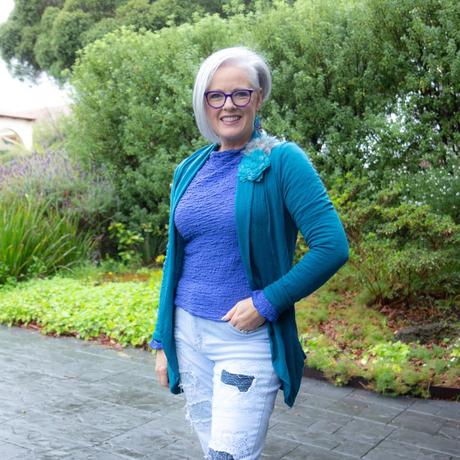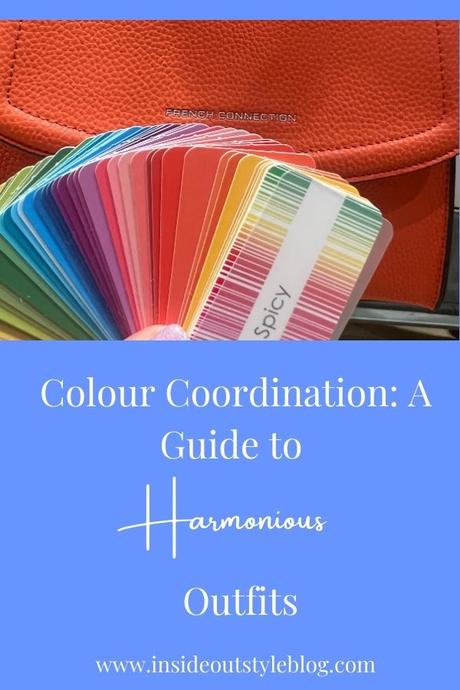You're not alone - here's a question I received from a lovely reader:
" My biggest challenge is selecting solid colours that work well together. Something- the shade, brightness or intensity-causes too many of my solids to not work well together. It doesn't help that I live in the Ozarks and am 100 miles from any clothing store so I do most of my "shopping" by mail order. Also, I am petite so the selection of clothes that will fit and flatter me is quite small. Any suggestions?"
Colour coordination can be a challenge, but with a few simple guidelines, you can create stylish and harmonious ensembles.
Understanding the Properties of Colour
- Intensity (or Saturation): This refers to how bright or vibrant a colour is. A high-intensity colour is saturated, bold and vivid, while a low-intensity colour is smoky, muted and subdued.
- Value: This refers to how light or dark a colour is.
- Undertones: These are the underlying hues that contribute to a colour's overall appearance.
The Importance of Colour Palettes
Using a colour palette can greatly simplify the process of colour coordination. When you have a palette, you can easily compare potential purchases to your palette and existing wardrobe and ensure they harmonize.
Key considerations when using a palette:-
Overall Intensity: Aim for a consistent level of intensity throughout your garment choices. When selecting garments in a store, hold them up together - do they look like they could be worn together (if the styles allow). If the answer is yes then they have enough in common colour-property wise and should then be taken to the changeroom and tried on. If one is much brighter and another more muted, you've strayed too far away from your best intensity and you won't find that your garments easily mix and match.

- Value Contrast: Consider the balance of light and dark colours. Too much contrast can be overwhelming if your colouring is not naturally high value contrast (think very dark hair with pale skin as an example of high value contrast). Not sure of your contrast? Check out my easy guide to figure out your contrast here.
- Undertones: Ensure that the undertones of your colours complement each other. This is where having your personalised colour palette from a personal colour analysis makes such a difference, as you know the colours have been selected with the same undertone as well as same intensity so it becomes so much easier to mix and match colours.
Tips for Colour Coordination
- Start with a Neutral Base: Begin with a neutral colour like brown, olive, navy, white, grey, or beige. This provides a versatile foundation for your outfit. Your best neutral base will relate to the colour of your hair.
- Add a Pop of Colour: Introduce an accent colour to create visual interest and make you more memorable.
- Use the 60-30-10 Rule: This rule suggests wearing 60% of your outfit in a neutral colour, 30% in a secondary or neutral colour, and 10% in an additional accent colour.
- Consider Complementary Colours: Complementary colours are colours that are opposite each other on the colour wheel. They create a striking contrast when used together. They make each other appear brighter and more vibrant.
-
Try Analogous Colours: Analogous colours are colours that are adjacent to each other on the colour wheel. They create a harmonious and soothing effect.

This is the best colour scheme if you are worried about looking too much like a clown wearing lots of colours at the same time. -
Experiment with Monochromatic Colours: A monochromatic outfit features different shades of the same colour (FYI Black and White is not a monochromatic colour scheme). This can create a sophisticated and elegant look.

But if you have a high colour contrast, this will look boring and dull on you, even if the colour is in your colour palette. Instead, you're better off adding in an accent colour, accessories are a really easy way of doing this without having to colour block garments.
By understanding the properties of colour, using colour palettes, and following these tips, you can confidently create outfits that look stylish and cohesive.
Tips for Petite Shoppers
- Shop Online Strategically: Research brands that specialize in petite clothing. Look for stores with detailed sizing charts and customer reviews.
- Consider Fabrics: Opt for fabrics that drape well and don't add bulk, such as lightweight knitwear and garments that don't have too much fabric.
- Experiment with Patterns: Small-scale patterns can be flattering on petite figures. Avoid large-scale bold patterns as they will swamp your frame.
- Accessorize Wisely: Belts, scarves, and jewellery can add visual interest without overwhelming your frame.
- Shop Regularly: Stores change stock frequently, so rather than assuming that you only need to go out looking once a season, shop more regularly as then you get to see more possible options. Shopping is a numbers game particularly when you're petite and looking for a specific set of colours!
Remember: While online shopping can be convenient, there's nothing quite like trying on clothes in person. If possible, make an effort to visit stores that carry petite sizes.
Want help with your colours and your body and style? 7 Steps to Style is my online program that takes what you learn here on the blog and dives even deeper with personalised advice and support. Find out more here now.
Getting Your Head Around Value and Contrast - the Celebrity Version
How to Choose Prints That Work With Your Colour Contrast



